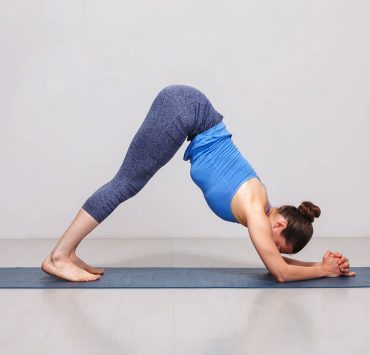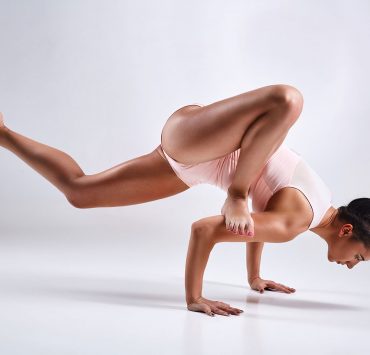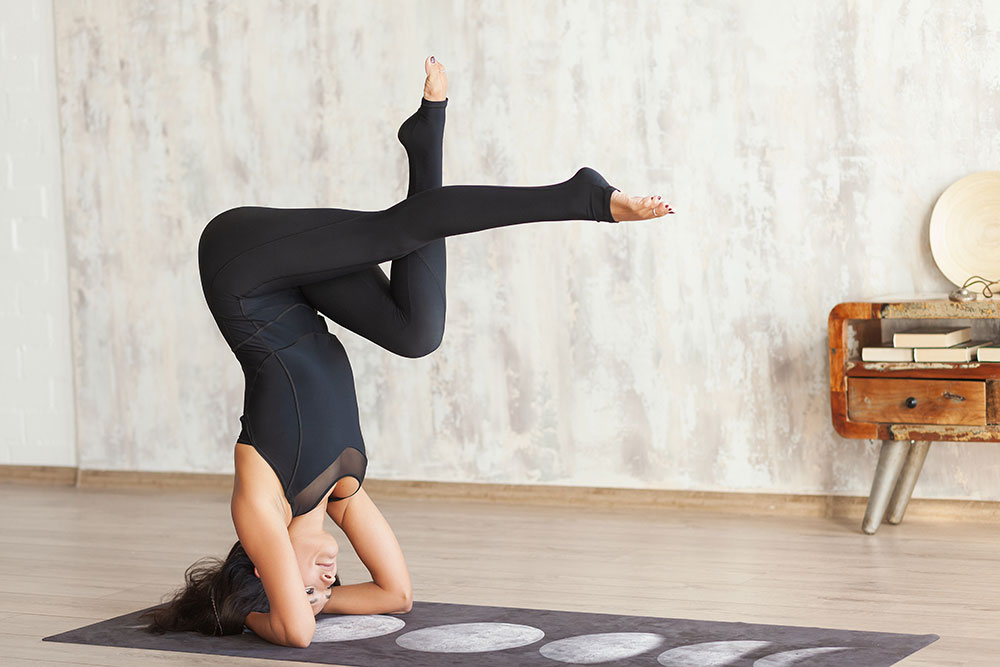
Having been a teacher’s assistant at over 50 yoga teacher…
Athletes are frequently looking for ways to improve athletic performance and reduce injury. Massage guns and rollers are just a few of the devices that athletes turn to when searching for answers to their training setbacks.
Instead of reactively looking for a way to boost performance or treat an injury, you can proactively make a change in your training plan. Yoga is effective to improve balance, strength, mobility, and flexibility in athletes.
Balance is a complex collaboration of your proprioceptive, visual, and vestibular systems. Certain postures in yoga will help strengthen these systems. This will improve your agility, speed, and power in sports.
Having improved balance will also help reduce your risk of injury. Being able to catch yourself from a misstep or control your body while you are on one leg will help keep your body safe during your sporting event.
Yoga can help improve total body strength. Strength provides more power and endurance in your athletic performance. Yoga will challenge your bodyweight strength, and holding the postures for a prolonged period will build muscular endurance.
Building strength can also increase the amount of muscle mass you have. Increased muscle mass will yield improved support for your joints and connective tissue. This will reduce your risk for injury and improve your orthopedic longevity,
Mobility refers to the amount of movement that you have in your joints. Having more mobility in your joints can increase your stride length. It also increases the amount of movement available to use in athletic movements. This gives you more range of motion to draw into your power. Imagine how much faster your running time will be if each stride were a few inches longer!
If you lack mobility in your joints, you are at risk for overuse and traumatic injuries to the surrounding ligament and tendon structures. Yoga can help you keep your joints mobile and reduce this risk and keep you in your training program.
Flexibility refers to the amount of length you have in your muscles. As with mobility, having more flexibility in your muscles will improve your stride length and degree of movement that you have to utilize in your sports. With more muscle length you have a reduced risk for overuse and traumatic strain-based injuries.
In addition to physical benefits, yoga can help athletes in the emotional and mental aspects of their training. Yoga is beneficial for stress management. Reducing stress can help athletes improve their handle their training schedule. It can help them cope with injury and perform better in competition.
Yoga helps with improved sleep quality. Better sleep will help athletes rest between training sessions for optimal performance. Sleep is a restorative aspect of every athlete’s training plan. Sleep provides the body its much needed time to heal in preparation for the following day.
Knowing how much yoga to perform and which style of yoga to practice can seem overwhelming. You should first reflect on your goals for your yoga practice. If you are looking for general balance and strength then choose a more active style of yoga, such as Vinyasa. If you are primarily seeking flexibility and relaxation benefits, choose Yin or Restorative.
When you are in your peak training season, try to fit yoga in your schedule for 20-30 minutes after your workout. Try to practice 3-4 days a week. Stretching can have negative effects on speed and power right after the stretch. You don’t want this to affect your training session. When in peak season, it is best to first workout and then do yoga.
If you are not in your peak season, take this time to practice longer 45-60 minute sessions 3-5 days per week. More time should be dedicated to improving your flexibility and mobility impairments.
You don’t need to go to a yoga studio to have a regular yoga practice. Try creating a quiet and simple space in your house. Having a home practice can help keep your yoga practice more consistent.
Check out these postures for a well-balanced yoga flow at home. These poses focus on strength, balance, mobility, and flexibility:
Balasana – Childs Pose
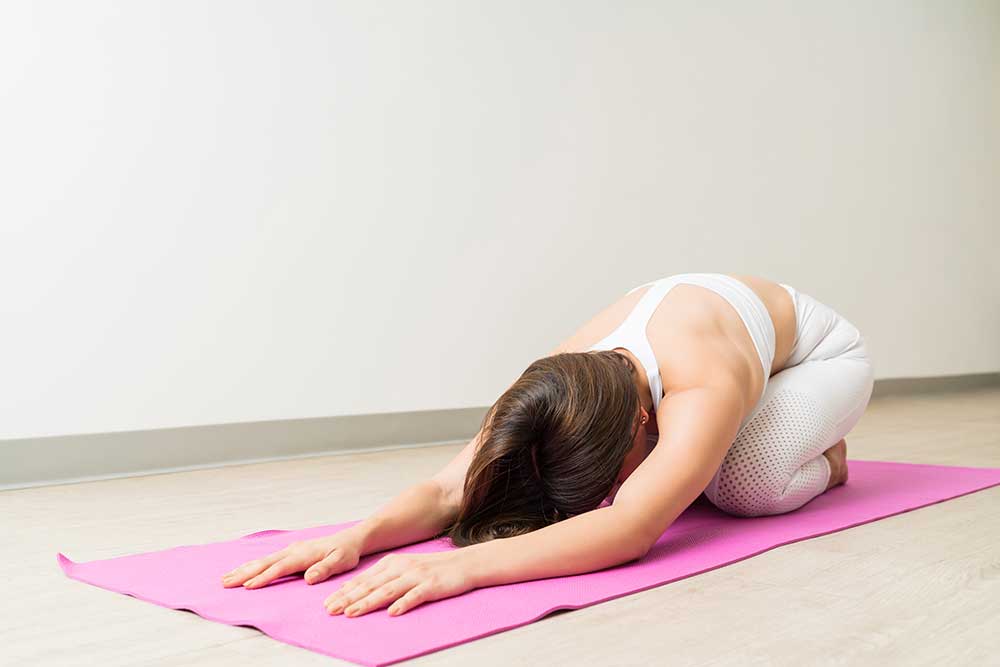
To begin your flow, start with this posture to improve shoulder, hip, and knee mobility. In this pose you can focus on your breathing for stress management and sleep benefit.
Start on your hands and knees. Bring your big toes to touch and move your knees out wide. Sink your hips to your heels as you rest your body on the ground. Reach your hands towards the top of your mat facing your palms down.
Relax your shoulders and soften your face and jaw. Feel your shoulders and hips opening up with each breath. Let your eyes close and take 5 slow breaths.
Marjaiasana/Bitilasana – Cat/ Cow Pose
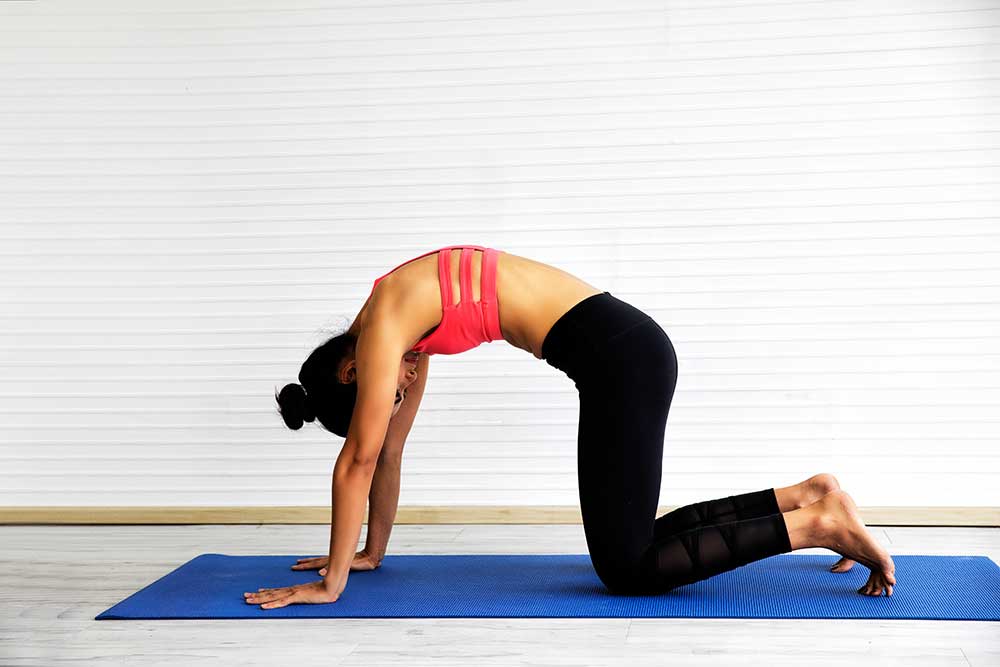
Cat/ Cow transitions work on your spinal mobility. Having spine mobility will optimize your posture. Improved posture increases your strength along your middle back, gluteals, hamstrings, and calves. Moving between each posture with your breath will also help quiet your mind and manage stress.
Begin on your hands and knees. Place your shoulders in line with your wrists and hips in line with your knees. Engage your lower belly.
Take an inhale and drop your breastbone towards the mat as you gaze forward. Feel an opening across the front of your check and between your shoulder blades.
On your exhale, round the upper back as you shift your gaze between your arms. Feel a stretch across the back of your neck and middle of your back. Continue transitioning between cat and cow for 10 rounds of breath.
Parsva Balasana – Thread the Needle Pose
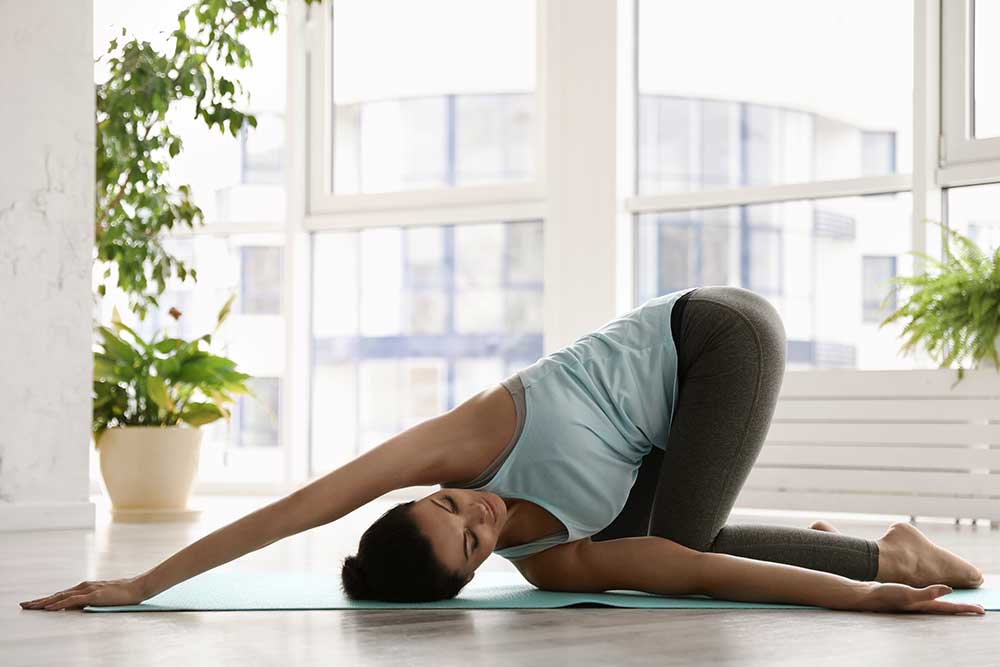
This pose will improve the rotational mobility in your spine. Thread the needle gives you a greater ability to access your obliques and more range of motion to use in your dynamic sports. It is important to stretch the body in multiple planes of motion for optimal performance. Twisting is one of the planes of motion often overlooked in a training routine.
Begin on your hands and knees. Reach your left arm under your body over to the right side of your mat. Drop your left shoulder onto the ground. Press the back of your left palm into the mat. Feel a stretch across the back of your shoulder and in between your shoulder blades.
Avoid letting your hips shift and let your head rest on the ground or onto a pillow. Hold for 5 breaths then switch sides.
Adho Mukha Svanasana – Downward Dog Pose
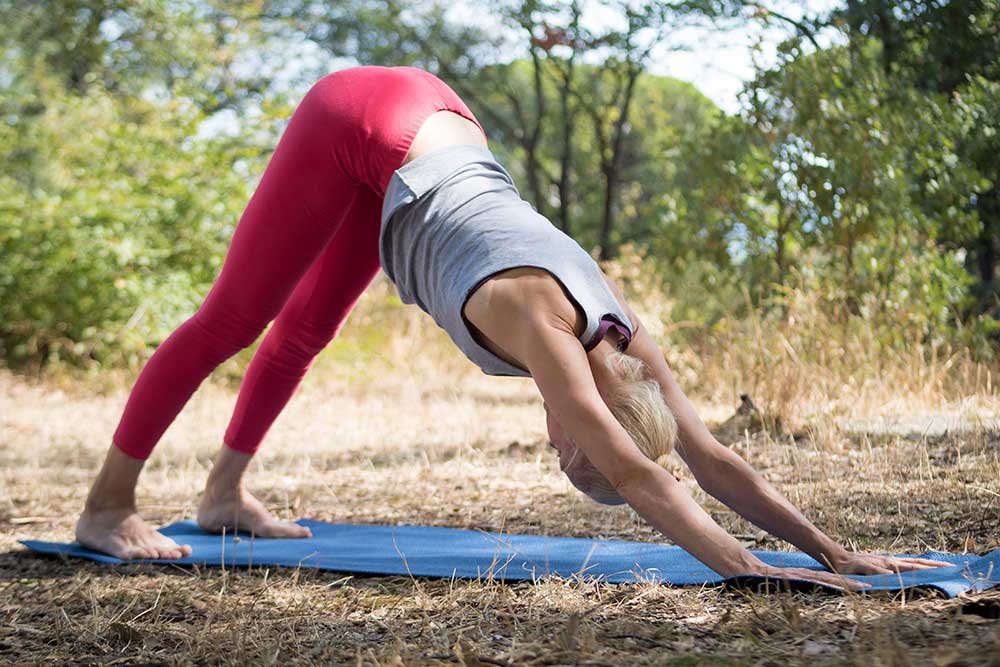
Downward dog will build strength in your upper body and abdomen. It increases flexibility in your calves and hamstrings. Downward dog improves the mobility at your ankles and spine.
This pose is considered an inversion. Inversions have benefits for stress reduction and improved sleep quality.
Begin in a plank position. Shift your hips up to the sky creating a V-shaped position with your body. Keep firm pressure into all four corners of your palm, facing your elbow creases towards the top of the mat. Gaze back between your heels.
Engage your abdomen and hold for 5 breaths.
Utthita Trikonasana – Triangle Pose

This posture will improve flexibility along the side of your body. This plane of motion is another often neglected in athlete flexibility routines. Try triangle pose to improve flexibility at your inner thighs, hamstrings, and lower back.
Start standing with your legs out wide. Swivel your right foot so your heel is in line with the left arch. Lift your arms up to shoulder height.
Begin tilting your body so your right hand reaches down to the mat and the left hand up to the sky. Keep your left side aligned on top of the right, as though your back was resting up against a wall.
As you inhale, press firmly into the pinky side edge of your left foot. Imagine the crown of the head lengthening towards the top of the mat. On your exhale, focus on opening up across the front of your chest.
Gaze up at the sky and hold for 5 breaths, then repeat on the second side.
Ardha Chandrasana – Half Moon Pose
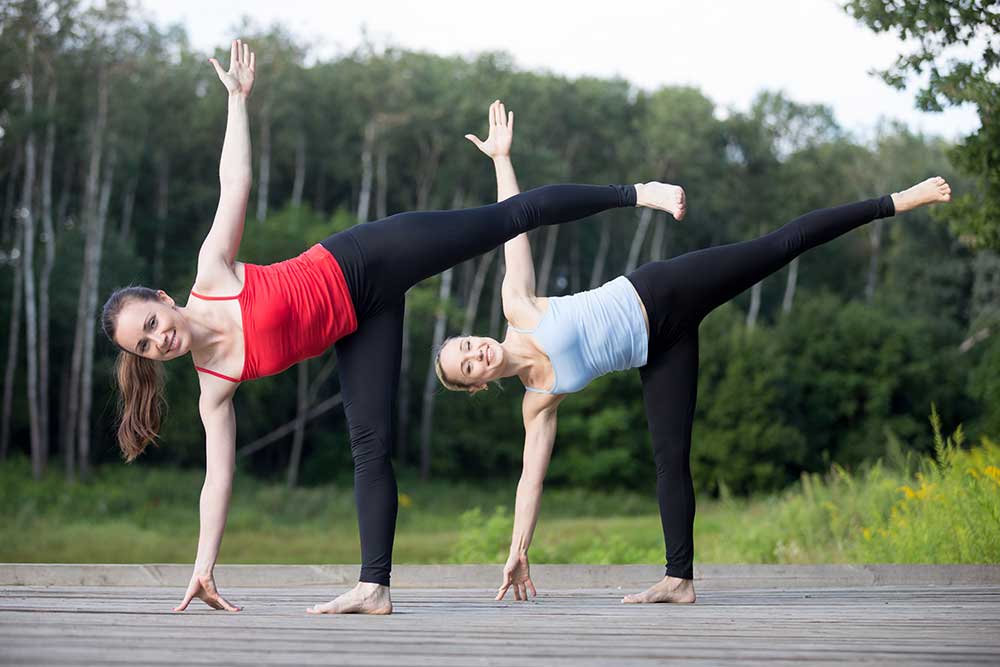
This pose will challenge your balance and the strength in your calves, hamstrings, and glutes.
From the triangle pose described above, lower your left hand to your hip. Walk your right fingertips a few inches in front of your right toes, using a block under the palm if needed.
Start to lift your left leg up off the ground, balancing on the right leg. Keep the left side of your body aligned on top of the right as though your back were resting up against a wall.
Hold for 5 breaths then repeat on the second side.
Eka Pada Utkatasana – Standing Figure 4 Pose
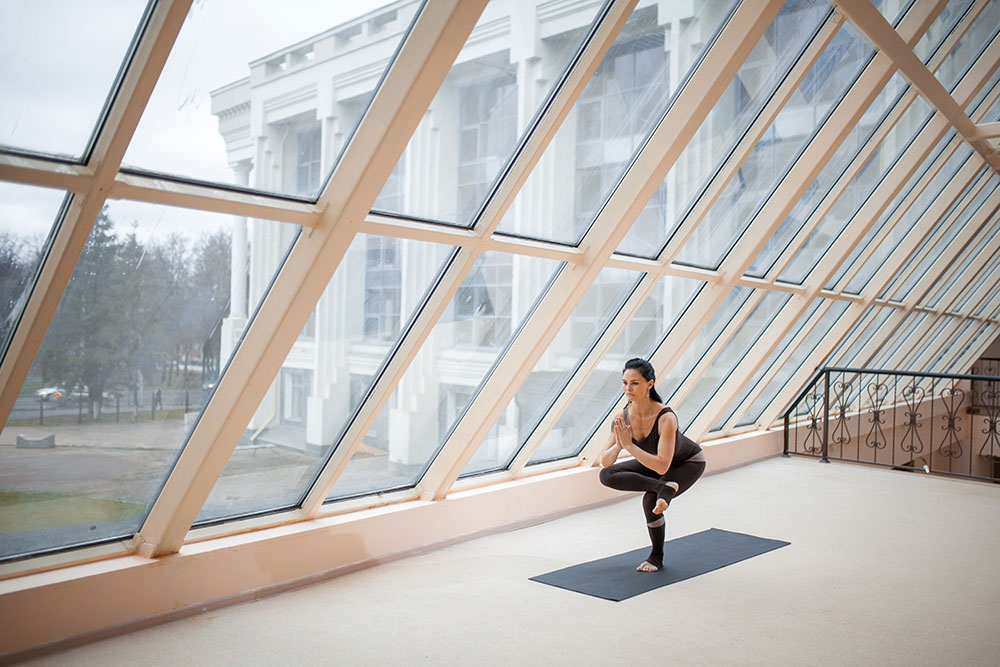
This is a challenging balance posture that also works on strengthening the glutes, calves, and core. In addition, standing figure 4 improves the flexibility/ mobility at your hips.
Begin standing with your hands on your hips. Lift your left knee to your chest, then cross your left ankle on top of your right knee. Begin sinking your hips back as though you were sitting into a chair.
Keep your left toes drawn back towards your shin and align your shin parallel to the ground. Hold for 5 breaths, then repeat on the second side.
Skandasana – Side Lunge Pose
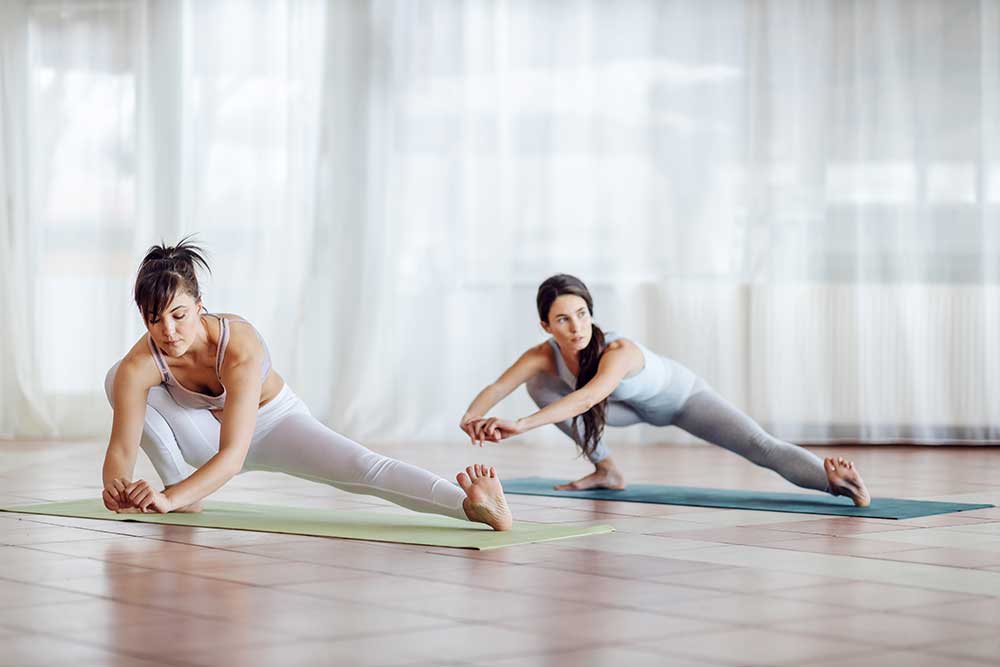
Skandasana improves the flexibility at your adductors, a commonly strained muscle in athletics. Improving your adductor mobility can help you build more hip and abdomen strength. Increased strength enhances athletic performance.
Start standing with your legs out wide. Bend into your right knee, keeping the left leg straight. Ensure that the right knee is aligned between your second and third toes, and shift the hips back so your knee does not shift over your toes.
Keep your hands at your hips or you can lower them to the ground. Hold for 5 breaths then switch to the other side.
Parivrtta Anjaneyasana – Runners Lunge with a Quadriceps Stretch Pose
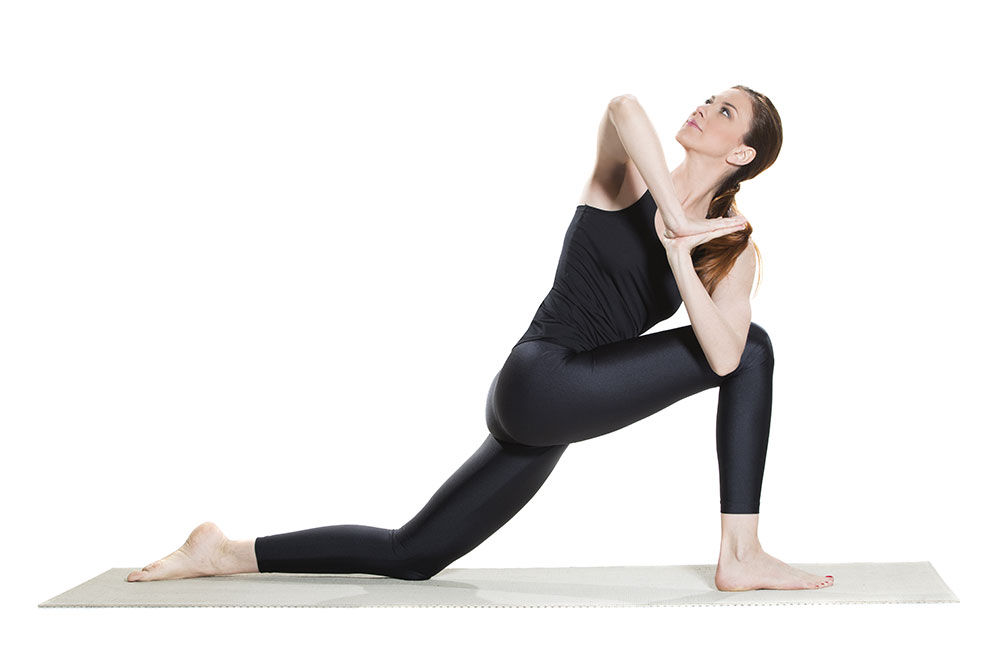
This variation of runners lunge will improve flexibility at your glutes, hamstrings, hip flexors, pectorals, and quadriceps. It will also improve mobility at your hips, knees, and thoracic spine.
Begin on your hands and knees. Place your right foot between your hands. Move your left leg back further to increase your stride length.
Keep your left hand on the ground and reach your right hand back. Begin bending your left knee so you can connect your right hand and left foot. Hold for 5 breaths then switch sides.
Supta Baddokonasana – Reclined Bound Angle Pose
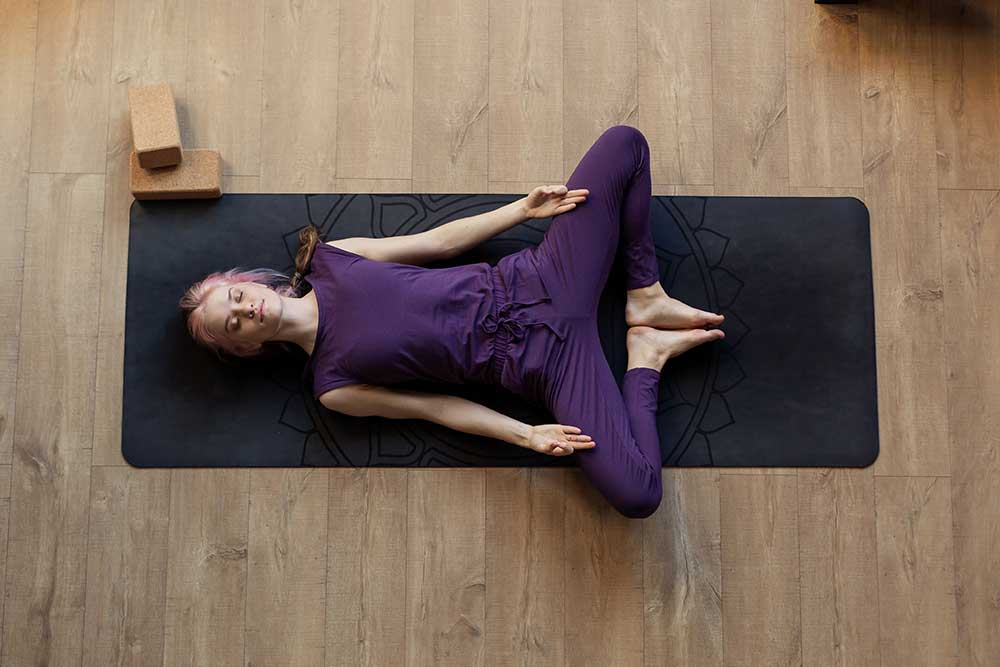
Supta BaddokonasanaFor the end of your home practice, Supta Baddokonasana will improve your hip mobility and flexibility. It also has relaxation benefits.
Lie on your back and bend your knees so the soles of your feet are on the ground. Let the knees fall open to the side, bringing the soles of the feet together. Rest your hands on your abdomen and close your eyes. Remain in this pose for 10 breaths.
Remember that unlike your athletic goals, yoga is not a competition. Don’t focus on getting into the deepest variation of each yoga pose. Focus on how each pose is contributing to your physical and mental well being, and how that supports your athletics.
Be mindful of where you are feeling each posture. You want to stretch and strengthe the correct body region and not contributing to injury. Plan to begin a yoga practice at an appropriate time in your training cycle. Adding into something new right before a big competition may not be the best time.
As your practice develops, you will notice your body gradually improving towards your goals. Without force or strain, your postures will continue to deepen. This is the goal of your yoga practice. Enjoy your practice and the benefits it has to offer without any competition with yourself.
What's Your Reaction?
Having been a teacher’s assistant at over 50 yoga teacher trainings worldwide, Olivia May has a firm grasp on the fine art of yoga and meditation. In her work, she carefully reflects on a vast expanse of knowledge to help others find peace in both body and mind.






